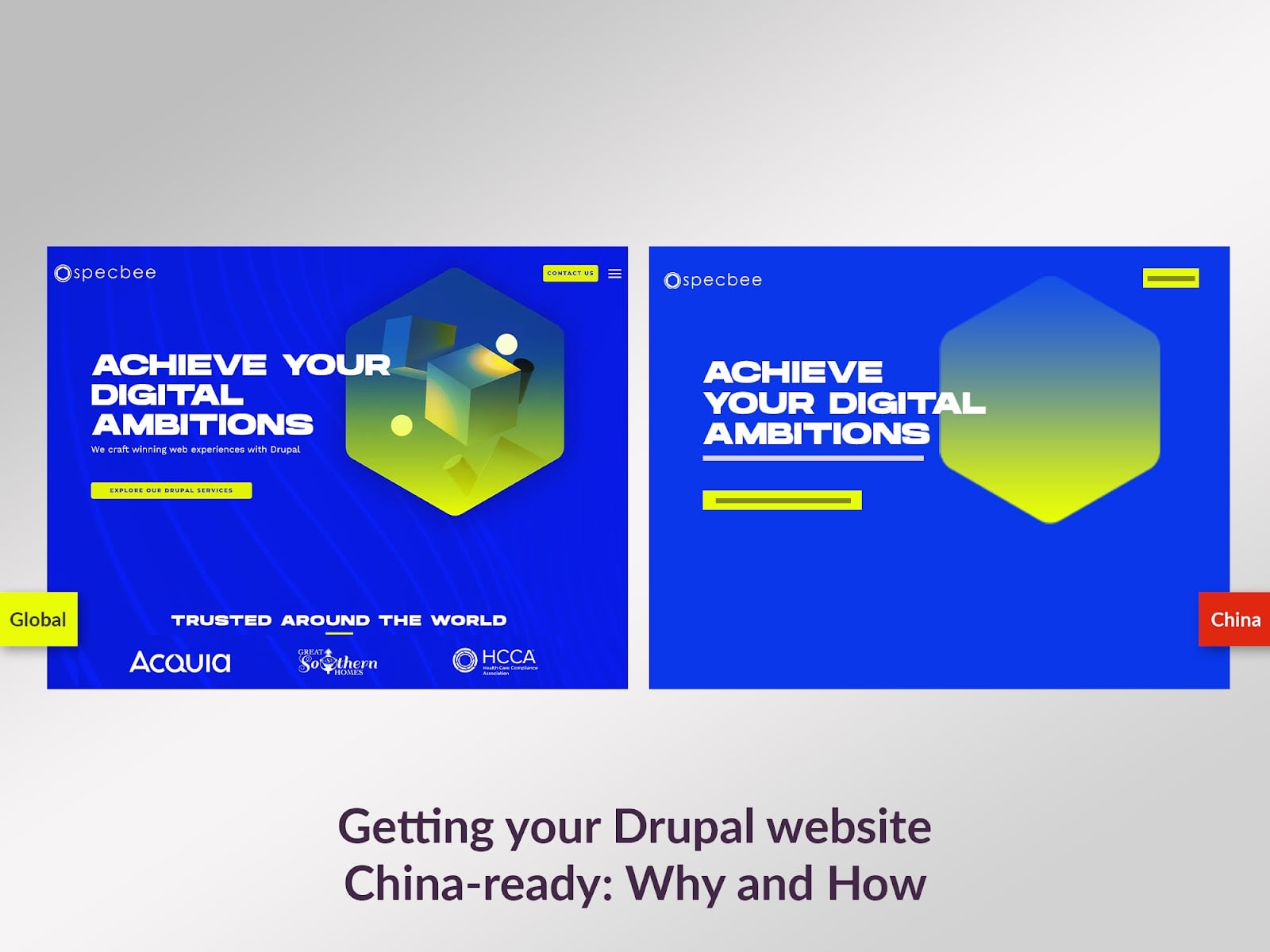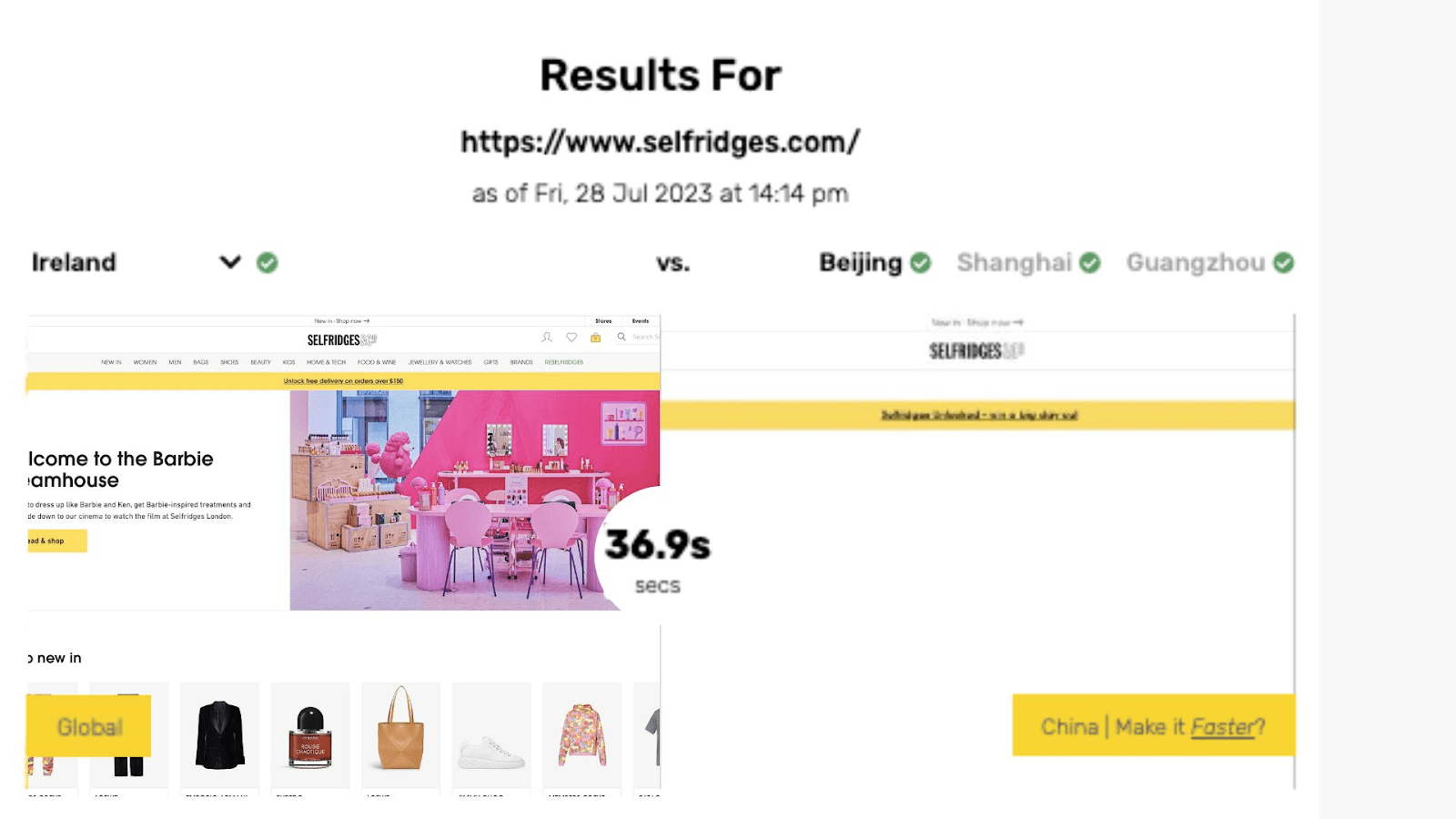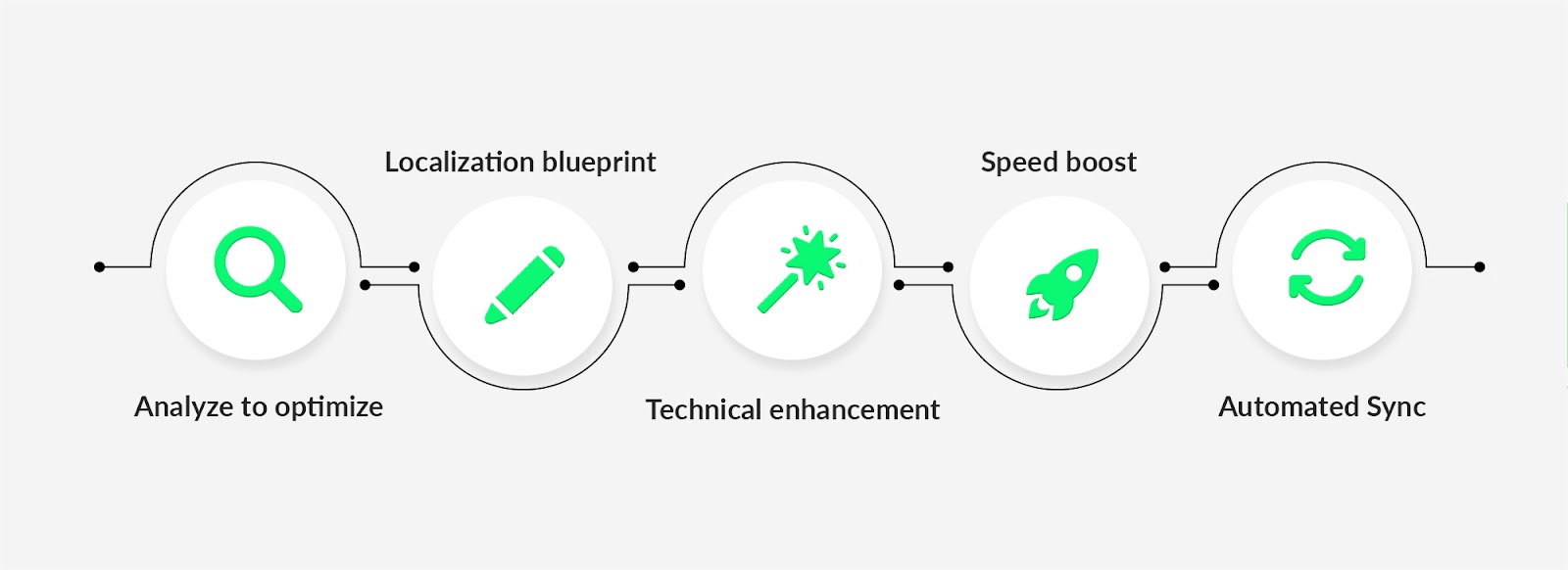Did you know that the Great Wall of China was the OG 'firewall'? Not for preventing password or network attacks, but for guarding kingdoms from unwanted visitors. Now fast forward to the digital era, and guess what? China now has its very own digital barrier too - the Great Firewall of China!
To all those folks who’ve never heard of the Great Firewall of China, it is a digital shield that came into effect way back in 1998 to regulate the internet within China. Foreign information sources and networking platforms like Facebook, Google, Wikipedia, X (RIP Twitter), and thousands of others that did not comply with their domestic regulations, were blocked, censored, or restricted in access.
In essence, if your Drupal website is hosted outside of China (and complies with Chinese internet regulations), there's a likelihood that its loading speed will be significantly slower for users in China. However, China's vast digital landscape offers an exciting chance for growth and connection, given its position as one of the world's fastest-growing economies. Something that you wouldn’t want to miss out on!
Discover the Great Firewall of China's story, how it works, and the compelling reasons to enhance your Drupal web presence in one of the world's fastest-growing nations!

The Story Behind the Great Firewall of China
Long ago, in the early 2000s, when computers were becoming a big deal, China thought, "Hey, we want to make sure our people only see things we like." So, they began building the Great Firewall, a digital wall around their internet.
This wall acted like a filter, keeping out things the government didn't want people to see. As years passed, around 2006, the Chinese government made the wall even stronger with more rules and technology, controlling what people could do online. Websites like Facebook and YouTube weren't accessible in China by 2009 because they didn't match the wall's rules.
The Great Firewall doesn't just affect people in China; it also affects websites from other places. If a website or app isn't in line with China's rules, it might be hard for people in China to visit it. So, while your Drupal website performs great in the rest of the world, in China, it might be entirely blocked, partially blocked (some resources and elements of your site), or just too slow to load.

Here’s a side-by-side visual speed test comparison of a website loading from Ireland and China. It's worth noting that, even 36.9 seconds into the loading process, the China page lacks certain resources.
Yay, or Nay?
While the outside world looks at the Great Firewall (GFW) as a restriction of freedom of ideas, opinions, and damage to scientific progress and innovation, many supporters would disagree. Why?
- Due to the restrictions on mainstream platforms like Facebook, Twitter, YouTube, Google, Whatsapp, and Amazon, China developed its own sustainable digital ecosystem. Platforms like WeChat, Weibo, Douyin (the Chinese version of TikTok) Baidu, Alibaba, and Tencent became immensely popular.
- It can help protect the country's information and infrastructure from cyber threats, such as hacking and malware.
- It allows the government to control the online content and information that Chinese citizens are exposed to, aligning with their cultural and ideological values.
- By filtering out certain content, social stability can be maintained and the spread of misinformation or content that could incite unrest could be prevented.
How does the GFW work
While people sometimes use special tricks, like tunnels or climbing over the walls (VPNs), to go around this firewall and reach places like WhatsApp or Facebook, they usually are shortlived and get banned sooner or later.
So how do they do it? Here are three techniques used to restrict access:
- IP Blocking - This method involves blocking specific IP addresses associated with websites or online services that the government wants to restrict. When someone tries to visit a blocked site, their request is denied by the firewall, and the site doesn't load.
- DNS Poisoning - Here the gateway servers manipulate the DNS server’s IP address response and filter and deny websites.
- Manual Censorship - There are teams of engineers, technicians, and officials who are responsible for manually reporting unauthorized content and making sure the firewall operates effectively
Prepping your existing site for the Chinese market
While all these measures might pose challenges for website owners, it's undeniable that China offers a market brimming with opportunities that many would want to explore. Why should you still consider Chinafying your website?
- Massive market potential
- Gives you a competitive edge (not everyone considers it!)
- Improved accessibility and enhanced user experience
- Content localization and better engagement
- Opens doors to partnerships, collaborations, and business opportunities
However, to ensure swift loading speeds within China, your Drupal websites could require intricate modifications and a significant allocation of resources.
So, what are your options?
- Host your website on servers located in China
- Use a Content Delivery Network (CDN) service with servers in China
- Get an in-China presence by collaborating with local digital landscape experts
- To improve your SEO, optimize your website for local search engines like Baidu and localize your content to China
- Leveraging an intelligent website optimization service like Chinafy can help resolve technical issues on slow or broken websites (more below)
How does Chinafy work?
Merely opting for a CDN, switching hosting providers, or upgrading network speeds may not always suffice to enhance your local content delivery. To achieve effective onshore delivery, a combined approach involving additional services is often necessary. Enter, Chinafy.
“Chinafy intelligently optimizes any website to achieve virtually onshore performance, and display more fully in China”
You can check out some of their case studies here.
So once you submit your website to Chinafy, here’s what happens:

Step 1: Analyze to optimize
Your website is analyzed to understand its structure, content, and technical aspects. This helps in identifying what parts of your Drupal website need optimization for the Chinese market.
Step 2: Technical enhancement
Using its Smart Action Function (rule-based optimization), Chinafy optimizes your website's technical aspects to ensure it loads efficiently in China. This might involve replacing slow/blocked resources with China-friendly ones (or sometimes removing them if no replacements are found), reducing code complexity, and enhancing overall performance.
Step 3: Speed boost
Chinafy then bolts websites onto fully-managed, near-China Content Delivery Network (CDN) services to achieve further performance gain They configure the CDN to cache and deliver your website's content with reduced latency, hence improving loading speeds.
For websites with an onshore presence and ICP, there are also the options to leverage onshore PoPs via Chinafy.
Step 4: Automated sync
Once the Chinafied version is ready, a synchronization mechanism is put in place. This automated mechanism essentially acts as a bridge between the two versions of your website— the one optimized for China and the original version hosted elsewhere. Now any changes made to your original site will be automatically tracked and synchronized with the Chinese version.
You can find more detailed information on “How Chinafy Works”.
Final thoughts
Optimizing your website for the Chinese market can offer remarkable opportunities for expansion and engagement, given China's robust economic growth and vast online population. By implementing a comprehensive strategy that combines localization, technical prowess, and adherence to local norms, you can position your Drupal website to effectively connect with Chinese users and thrive in one of the world's most dynamic digital landscapes. Ready to prep your website for the Chinese audience? Let's discuss how we can tailor your Drupal website for success in China. Reach out to us today!



